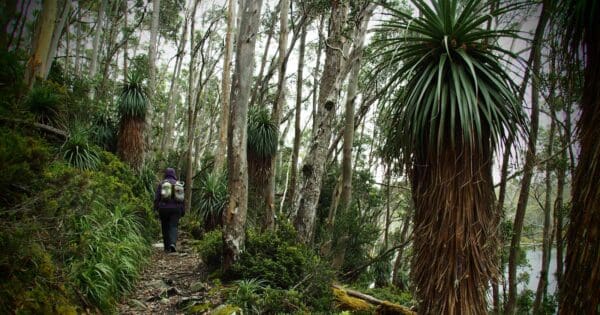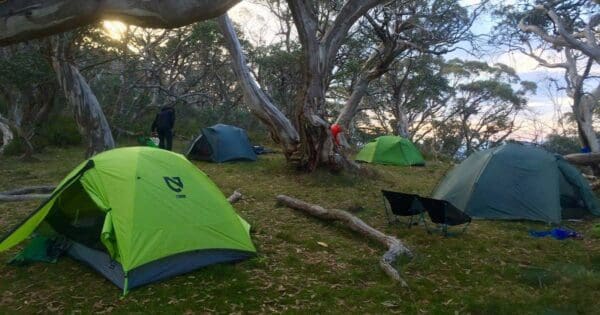Why Minestrone Soup is Perfect for Hikers
Minestrone soup is a well-balanced, nutrient-dense meal packed with carbohydrates, vegetables, and a touch of protein, ideal for bushwalkers. The pasta and beans provide slow-releasing energy, keeping you fuelled for long treks, while the vegetables offer vitamins and minerals to support recovery. It’s lightweight, rehydrates easily, and offers comforting warmth at the end of a day on the trail.
What You’ll Need (Serves 1)
Base Ingredients
- 1/4 cup small pasta (e.g., elbow macaroni or small shells)
- 1/4 cup cooked and drained red kidney beans (or substitute with chickpeas)
Vegetables
- 2 tablespoons diced carrot
- 2 tablespoons diced zucchini
- 2 tablespoons diced celery
- 1 tablespoon diced onion
- 1 tablespoon diced tomato (or 1 tablespoon tomato paste for a richer flavour)
Seasoning
- 1/2 teaspoon dried basil
- 1/2 teaspoon dried oregano
- 1/4 teaspoon garlic powder
- 1/4 teaspoon black pepper
- Pinch of salt (optional)
- 1/2 teaspoon vegetable stock powder
How to Prepare at Home
- Cook the pasta until it is slightly undercooked (al dente) and allow it to cool completely.
- Rinse and drain the kidney beans.
- Lightly steam or blanch the diced vegetables to soften them before dehydrating.
- In a bowl, mix the pasta, beans, vegetables, and all the seasonings, ensuring everything is evenly coated.
Dehydration Process
- Spread the mixture evenly across dehydrator trays lined with parchment paper or silicone mats to prevent sticking.
- Dehydrate at 60°C (140°F) for 8–10 hours, rotating trays halfway through to ensure even drying.
- Check that all components are fully dried. The pasta should feel hard, and the vegetables and beans should be brittle.
Storage Tips
Storage times of up to 6 months in an airtight container and up to 1 year in the freezer are generally accurate for dehydrated meals when properly dried and stored. However, a few factors can impact the longevity:
- Dehydration Quality: If all moisture is thoroughly removed, the meal is less likely to spoil or develop mold.
- Storage Conditions: Airtight packaging (vacuum sealing is ideal) and storing in a cool, dark, dry place will help extend shelf life.
- Ingredients Used: While couscous and chickpeas are relatively stable, if you’re using additional ingredients like olive oil or feta, be aware they may shorten the shelf life.
- Oxygen and Moisture Exposure: Using oxygen absorbers in vacuum-sealed bags can help prolong the storage life, especially for long-term storage.
If unsure, freezing is the safest long-term option. Some sources may recommend shorter storage times to account for potential moisture retention or imperfect dehydration.
For best results, if your Minestrone Soup is properly dehydrated, vacuum-sealed, and stored in a cool, dry place, 6 months is a reasonable timeframe. If frozen, it can last for a year or longer. If stored in less ideal conditions (such as a basic container at room temperature), expect the shelf life to be a few weeks to a couple of months.
Rehydrating on the Trail
For the best quality and safety, always check for signs of spoilage (off smells, discoloration, or moisture buildup) before rehydrating.
- Boil 1.5–2 cups of water using your hiking stove. Adjust the amount of water depending on how thick or brothy you prefer your soup.
- Pour the hot water into your container with the dehydrated soup mix. Stir thoroughly to combine.
- Cover and let it sit for 10–15 minutes, stirring occasionally to ensure even hydration.
- Once the pasta, beans, and vegetables are fully rehydrated and soft, your minestrone soup is ready to eat.
Final Thoughts
Dehydrated minestrone soup is a lightweight, warming option for hikers seeking a balanced and nutritious dinner on overnight or multi-day trips. By preparing it at home, you can customise the ingredients to suit your taste and dietary needs, ensuring you have a satisfying, wholesome meal at the ready.
For more inspiration and meal ideas, visit my page on Hiking Food Tips and Ideas.






As some of you may have guessed, I bought myself a new dehydrator recently. So I’ll be sharing a few meal posts.
Trail Hiking Australia do you know about Helen Mckerral and her recipes?
https://slowerhiking.com/recipes
Rob Margono yes. Why do you ask?
Trail Hiking Australia I’d guess it’s a promotional plug. Nice try, I’m not biting.
Rob Margono good one. Is this a paid promo?
Trail Hiking Australia oh I just love her recipes!
Oooo another recipe! This one looks great too!